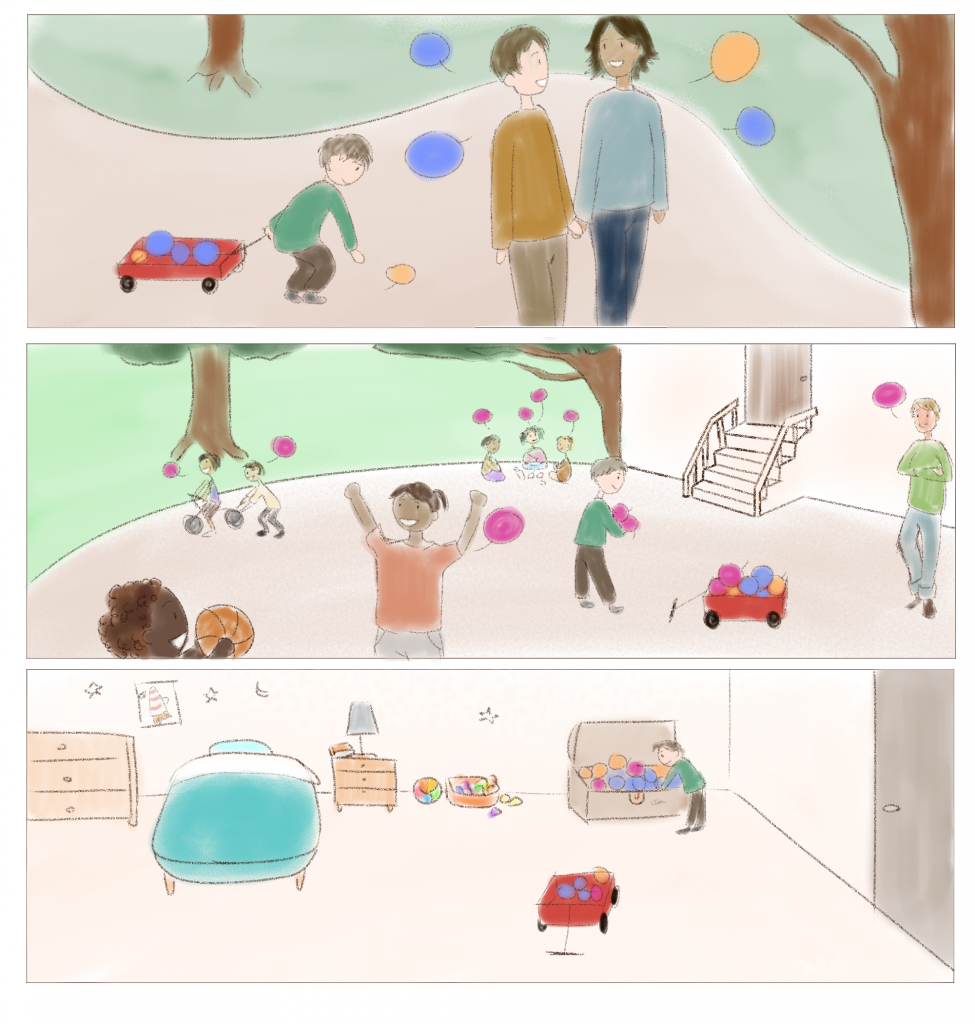Do children need to hear each language equally to become bilingual?

Some kids may hear Japanese at home and English at school. Other kids may hear one of their caregiver’s speak Spanish and the other French. Bilingual children grow up learning two languages, but how much they hear or speak each language can vary greatly. Typically, bilinguals tend to hear one language more than the other, speak one language more than the other, and build up different learning outcomes in each language. ‘Language dominance’ is the term used to describe which language is heard or spoken more.
Caregivers raising a bilingual child often hope that the child will become equally dominant in each language, or ‘a balanced bilingual’. However, that is rarely the case! Even with the outmost planning on the part of caregivers, the amount of language a child hears or speaks often changes throughout childhood. Caregivers may speak each language an almost equal amount at home, but this balance could tip when the child enters nursery school or starts spending more time with granny on the weekends. It is perfectly normal for language dominance to evolve throughout life, and this evolution is part of what it is to be a bilingual!
‘Non-dominant’ can often be interpreted as ‘deficient’, when in reality language dominance is just a ranking. You might make pasta sauce a teeny weeny bit more often than mango chutney, so making it comes a bit more naturally. Yet, they are both favourites at dinner parties! Language dominance is the same: a child may be a little more dominant in one language than the other, and still become proficient in both.
Counting hours of speech in each language or logging the amount of time spent hearing each language can just add stress for caregivers and children. That time is better allotted to engaging the child in fun and meaningful activities in both languages!
Join us next time when we look at how bilingualism is affected by the age at which you start learning a second language.
The scientific sources of our comic:
